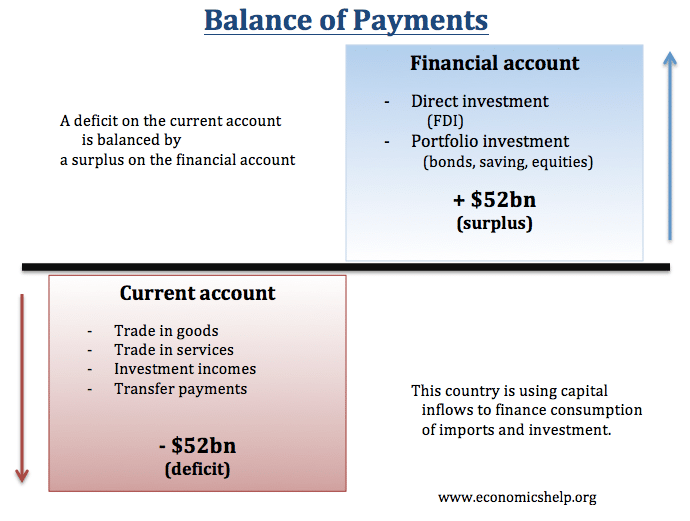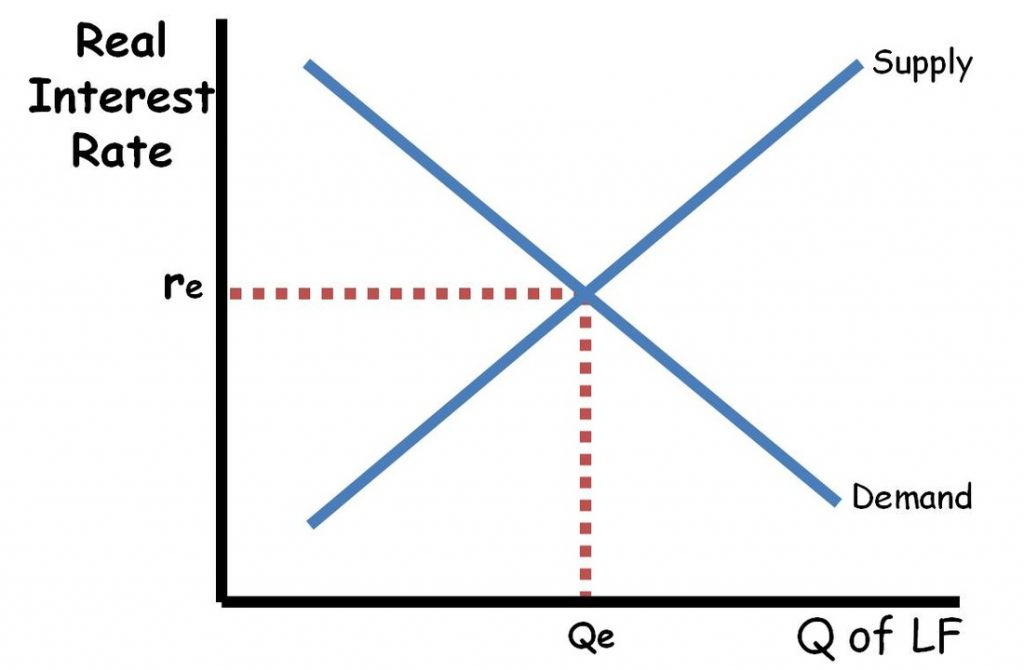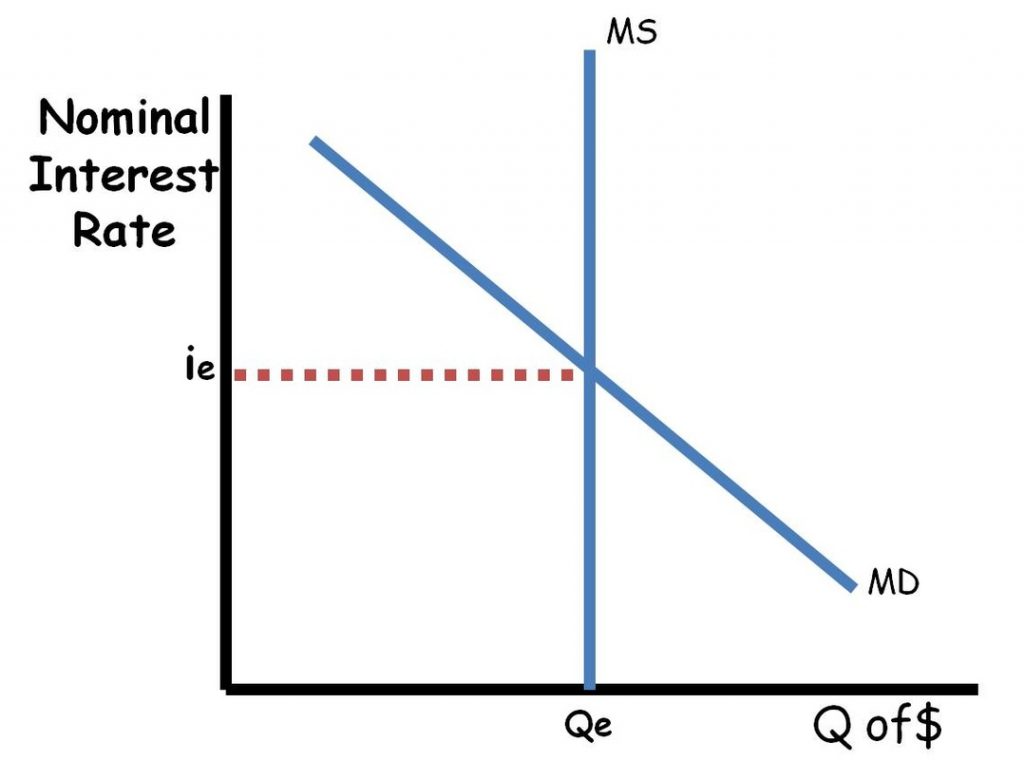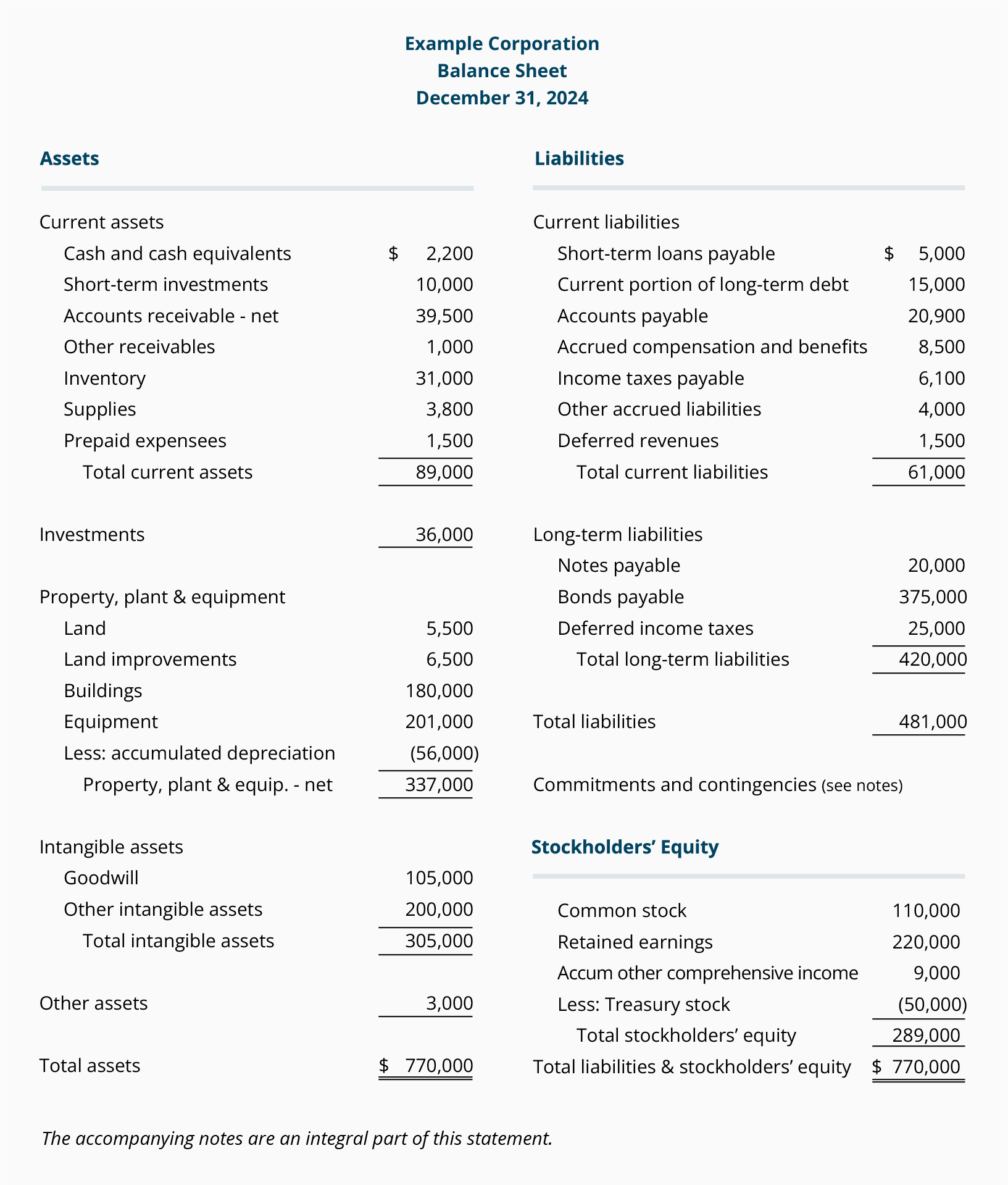The measure of money inflows and outflows between the US and the rest of the world (ROW)
- Inflows are referred to as credits
- Outflows are referred to as debits
- Current Account
- Capital/Financial Account
- Official Reserves Account
 |
Balance of Trade or Net Exports
- Exports of Goods and Services (G&S)
- Exports create a credit to the balance of payments
- Imports create a debit to the balance of payments
- Net Foreign Income
- Income earned by US owned foreign assets - Income paid to foreign held US assets.
- Example: Interest payments on US owned Brazilian bonds - Interest payments on German owned US treasury bonds.
- Net Transfers (tend to be unilateral)
- Foreign aid ➝ a debit to the current account
- Example: Mexican migrant workers send money to family in Mexico.
The balance of capital ownership.
- Includes the purchases of both real and financial assets
- Direct investment in the US is a credit to the capital account.
- Ex. Toyota factory in San Antonio
- Direct investment by US firms/individuals in a foreign country are debits to the capital account.
- Ex. The Intel factory in San Jose, Costa Rica
- Purchase of foreign financial assets represents a debit to the capital account
- Ex. Warren Buffet buys stocks in Petrochina
- Purchase of domestic financial assets by foreigners represents a credit to the capital account.
- Ex. The United Arab Emirates Sovereign Wealth Fund purchases a large stake in the NASDAQ
- Relationship between Current and Capital Account
- The current account and the capital account should zero each other out.
- That is...if the current account has a negative balance (deficit), then the capital account should then have a positive balance (surplus)
The foreign currency holdings of the US Federal Reserve System
- When there is a balance of payments surplus the Fed accumulates foreign currency and debits the balance of payments.
- When there is a balance of payments deficit the Fed depletes its reserves of foreign currency and credits the balance of payments.
- The official reserves zero out the balance of payments.
Formulas
- Balance of trades
- Good exports + good imports
- Balance of Goods and Services
- (Goods exports + service exports) + (Goods imports + services imports)
- Current Account
- Balance of Goods and Services + Net investment income + Net transfers
- Capital Account
- Foreign purchases of assets + US purchase of assets
- Official Reserves
- Current Account + Capital Account


